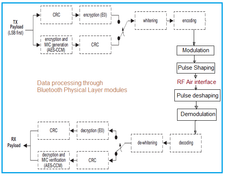
UMTS Architecture: 3G Network Explained
Explore the UMTS architecture diagram, detailing the UE, UTRAN, and Core Network components, along with key interfaces. Understand the benefits of 3G networks.
Advertisement

Explore the UMTS architecture diagram, detailing the UE, UTRAN, and Core Network components, along with key interfaces. Understand the benefits of 3G networks.
Learn how UMTS uses modulation (QPSK/BPSK), spreading, and scrambling to optimize data transmission and improve 3G network performance.
Explore the multiple access techniques employed in UMTS (3G), including WCDMA, TD-CDMA, and TD-SCDMA, and learn how they enable efficient spectrum use.

Explore UMTS (3G) technology: network architecture, advantages, disadvantages, and comparisons with GSM (2G) and LTE (4G). Understand its role in mobile communication.

Explore the 2G GSM call flow, detailing network entry procedures, authentication, and call setup between mobile devices and base stations. Includes a call flow diagram.

Explore 5G mmWave frequency bands (30 GHz to 100 GHz) and the millimeter wave range, which are key to ultra-fast speeds and low latency in 5G technology. Discover bandwidth details.

Explore the architecture of 5G networks, including the 5G NR architecture, RAN elements, protocol stack, and key components as defined by 3GPP.

Explore key 5G RF parameters for testing devices and networks. This article covers frequency range, bandwidth, signal quality, transmit power, and more.

Explore 802.11ac beamforming, enhancing SNR and data rates through focused transmission. Learn about explicit channel measurements, NDP sounding, and single/multi-user beamforming techniques.

Explore the ARM cache architecture, including L1, L2, and L3 caches, and specialized caches like TLB and BTB. Learn how these caches enhance performance by reducing memory access times.

Explore the ATM Protocol Stack architecture, focusing on the ATM Adaptation Layer (AAL) and Data Link Layer. Understand how these layers ensure seamless data transmission.

Explore the functions of ATM switches, their role in cell switching, how they work, and how they handle operations like VP/VC mapping and congestion control.

Explore biometric systems: how they use unique traits for identification and authentication, from fingerprints to facial features, enhancing security and access control.

Explore the Bluetooth physical layer's specifications based on IEEE 802.15.1, including modulation techniques like GFSK, signal representation, and the influence of physical layer attributes on data transfer rates.
Learn about cable TV channel frequencies, how they are assigned, and how signals are downconverted for transmission. Includes a comprehensive frequency chart.

Explore the architecture of Cellular Digital Packet Data (CDPD), a technology enabling data transmission over existing cellular networks. Learn its features, applications, advantages, and limitations.

Explore the four cloud computing deployment models: public, private, hybrid, and community. Understand their characteristics, advantages, and disadvantages to make informed decisions.

Cloud storage allows you to remotely store and access your data over the internet, offering convenient backup and retrieval. Learn about cloud storage basics.

Explore the architecture and functionality of cloud storage, including redundancy and data replication for reliable data management and accessibility.

Explore cloud storage: its definition, infrastructure components (hardware & software), various types (personal, enterprise, object, etc.), and key infrastructure requirements.
Advertisement